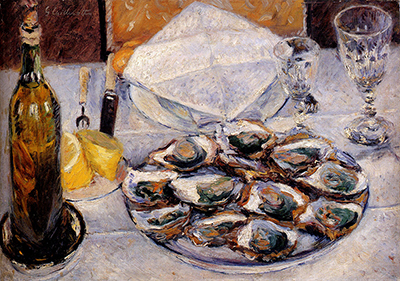Still Life with Oysters is an oil painting on canvas by Gustave Caillebotte. The painting delivers a vivid picture with maximum colour accuracy as well as exceptional resolution. Still Life with Oysters painting is the most famous artwork among the connoisseurs of art. Gustave Caillebotte was an artist of great originality, and this can be seen in this particular painting.
In the painting, he pursued an instant of vision representing it with the fullness of accurate details. However, he tried to portray all the rhythms of an industrial and artistic society with most of his well-ordered figures, including the Still Life with Oysters.
The Techniques Used
In the painting, Gustave Caillebotte used the structure and centring technique. Since the very beginning of his artistic career, he especially loved the views from above and not below. The Still Life with Oysters is already proof of this style and taste. The technique features a unique angle with the addition of a learning mirror that creates an interesting and original dialogue.
Also, he used the impressionist technique in most of his paintings, including the Still Life with Oysters painting. Another common characteristic in his paintings is the subjective camera technique where he uses the translation effect. He utilized this technique in most of his scenes, where he is part of the painting. Various artists inspired the idea and rendering of this technique and effect and made it possible to design and complete the painting on time.
Planning and Materials Used
The Still Life with Oysters by Gustave Caillebotte is an oil painting on canvas. During his early period, the palette that was used by Gustave was sober as well as classical and close to that of Courbet. In this painting, Gustave used to paint in a fashion that is close to the impressionism with some fragmented application of colour and brighter palette for the background.
The painting was created during the Impressionist period, and it features a heavy thickness, which can be noticed in some parts. It's obvious that Gustave, when unsatisfied with his artistic work, he never scraped the paint like most artists used to do. Some of the artists who were inspired by Gustave include Manet.




